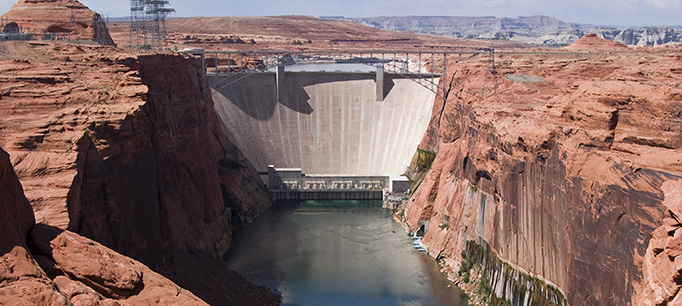
The federal government is a key partner in just about every aspect of western water management. It’s the West’s largest landowner, chief environmental regulator, major supplier of irrigation water and hydropower, key provider of water information, and an important source of water-related funding. The vast scale of its involvement has brought big challenges to how it manages the drought that has affected the entire 11-state region in recent years.
The fed’s role in managing droughts in the West was the topic of a seminar in Washington, DC, last week, a joint effort of Resources for the Future and the PPIC Water Policy Center. Along with a panel of prominent national experts, we discussed how to improve policies and practices to build drought resilience at the federal level, with a focus on pragmatic changes that are doable in the near term. I introduced recommendations from our new report, Improving the Federal Response to Drought: Five Areas for Reform, to help structure the conversation.
A panel discussion followed, with my colleague Jeffrey Mount moderating. He asked panelist Ann Mills, deputy under secretary for natural resources and environment at the US Department of Agriculture, about how USDA’s vast array of programs could be better coordinated for drought.
Noting that there are 15 agencies just within the department that have some influence on water management, Mills said, “We’ve started to create USDA water teams at the senior policy level … to make sure we’re coordinating our work as effectively as possible. There are real challenges in breaking down silos in the USDA and the federal family.” Mills noted that USDA is also seeking to improve its data and make it actionable and more available to customers. “And we’re building on the really great work that’s already happening on the ground,” she said.
Panelist Mark Kramer of The Nature Conservancy was asked about the lack of a “drought plan” for the environment during the latest drought, which might have reduced the crisis now facing some species.
“The pressure to squeeze more water out of the system is enormous,” Kramer said. Water has been framed as an “either-or” proposition—either it goes to the environment or to human uses. But, he noted, it can be managed in ways that address environmental needs without harming other users. The Nature Conservancy has been working on pilot projects that help farmers put water “when and where it’s needed”—for example, to create temporary wetlands for birds during drought. To scale up these efforts, some agencies may need more funding and other tools.
These are tough, multidimensional problems, and solving them will require a heavy lift. But increasingly, people in the West realize we can’t continue with “business-as-usual” water management. Tom Iseman, deputy assistant secretary for water and science at the US Bureau of Reclamation, noted that westerners are already experiencing the impacts of hotter, longer droughts, and realizing some things will need to change. “We’re trying to get ahead of these problems, to promote long-term drought resilience.”
Read a summary of policy recommendations from Improving the Federal Response to Western Drought (February 2016)
Read “There’s Always Drought Somewhere in the West” (PPIC blog, February 4, 2016)


